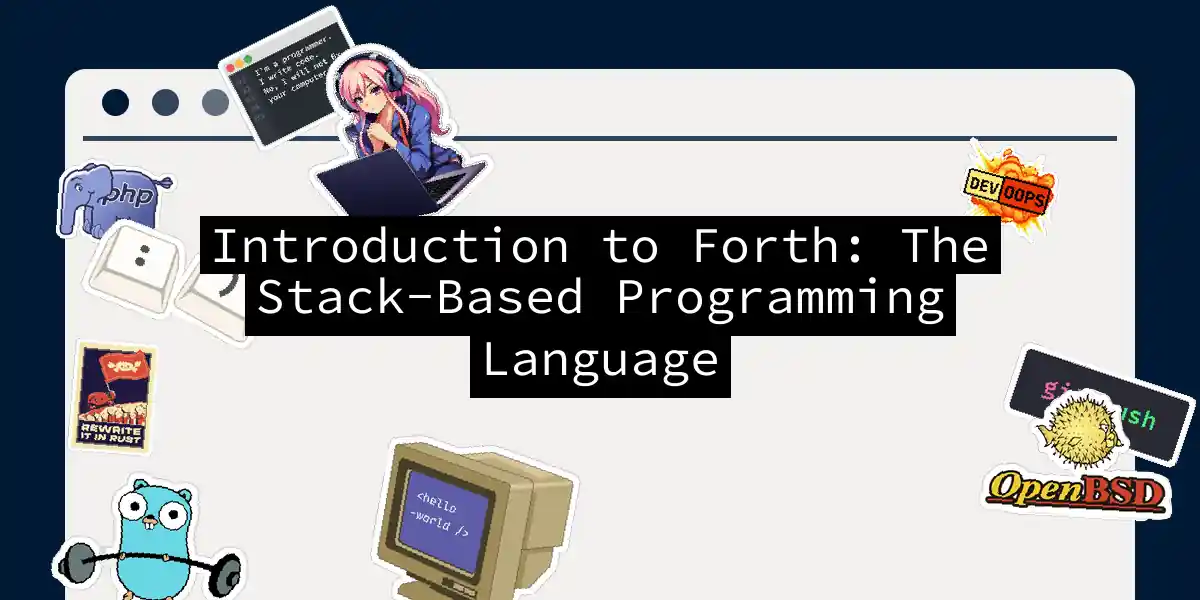When programmers ask me about “out-of-the-box” languages, I grin and whisper: “Have you met Forth?” Picture a minimalist language where every operation feels like playing Jenga with numbers – welcome to stack-based programming! Born in the 1970s from Charles Moore’s genius, Forth treats data like pancakes: you flip them, stack them, and sometimes devour them (metaphorically speaking). Let’s peel back the layers of this eccentric language where parentheses are rare, but stacks reign supreme. Buckle up – we’re diving into the CPU’s equivalent of a zen garden.
The Stack: Forth’s Beating Heart
Forth’s entire universe revolves around a Last-In-First-Out (LIFO) data structure called the stack. Imagine a pile of books: the last book you place is the first one you remove. Forth manipulates this stack relentlessly:
5 2 3 \ Push three numbers
.s \ Display stack: <3> 5 2 3
+ \ Add top two values: 2+3=5
.s \ Now: <2> 5 5
Try this live:
- Type
5 ENTER→ stack shows5 - Type
2 ENTER→ stack:5 2 - Type
3 ENTER→ stack:5 2 3 - Type
+ ENTER→ stack becomes5 5
Need to multiply?6 7 * .prints42(the ultimate answer, naturally). The stack constantly reshapes like digital clay – your hands never leave the data.
Arithmetic: Calculator on Steroids
Forth transforms math into stack acrobatics. Witness:
13 2 mod . \ Prints 1 (remainder)
99 negate . \ Outputs -99
-99 abs . \ Absolute value: 99
Reverse Polish Notation (RPN) is Forth’s native tongue. While 2 + 3 becomes 2 3 + here, it’s brilliantly efficient – no parentheses needed! Try calculating (1360 - 23) * 2:
1360 23 - \ Stack: 1337
2 * . \ Prints 2674
Crafting Your Own Words
In Forth, functions are called “words”. Create one with : (colon) and ; (semicolon):
: SQUARE ( n -- n^2 ) dup * ; \ Defines SQUARE
5 SQUARE . \ Prints 25
Breakdown:
dupduplicates the top stack value*multiplies them- The comment
( n -- n^2 )documents stack effects
Now build an average calculator:
: AVERAGE ( a b -- avg ) + 2 / ;
10 20 AVERAGE . \ Prints 15
Forth’s Brain: The Interpreter Loop
How does this magic work? Forth’s interpreter runs this cycle:
This loop:
- Splits input by spaces
- Checks dictionary for words
- Pushes numbers onto stack
- Errors on unrecognized input
Why Forth Matters Today
While Forth seems archaic, its DNA lives in:
- Embedded systems (tiny memory footprint)
- Bootloaders (BIOS/UEFI)
- Astronomy gear (James Webb Space Telescope!)
One NASA engineer joked: “Forth is like assembling furniture with a Swiss Army knife – terrifying at first, then oddly satisfying.” Its minimalist beauty teaches programming fundamentals stripped to their bare bones.
So next time you’re coding, imagine a universe without variables – just you and the stack, dancing in perpetual
okresponses. Forth isn’t just a language; it’s a meditation on computational elegance. Now godupyour curiosity andjumpinto the stack!
